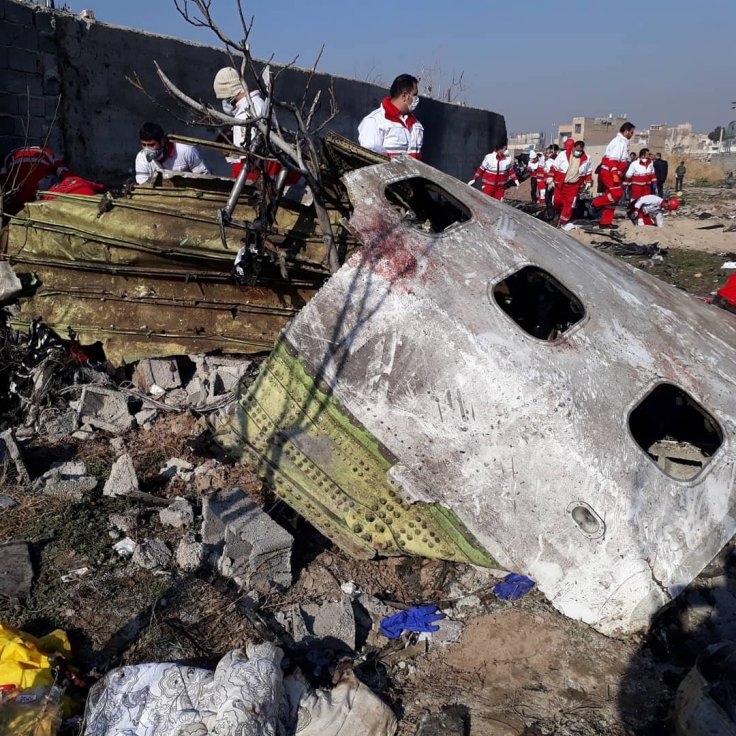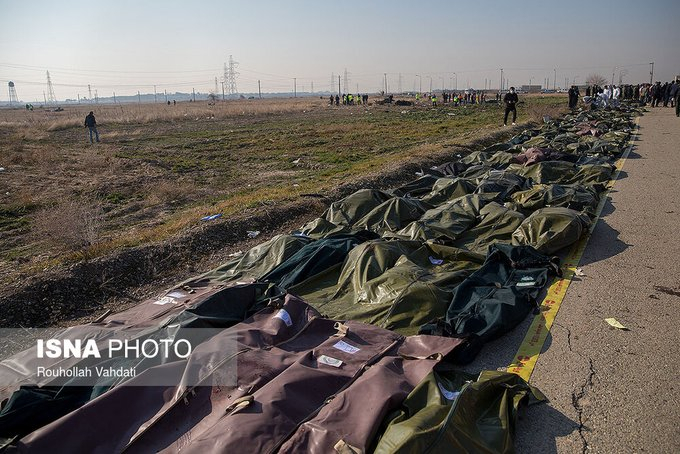Speculations over the crash of the Ukrainian passenger jet have taken a decisive turn after a video surfaced showing a missile hitting an object in Tehran sky around the time the Kyiv-bound aircraft went down in a ball of flame on Wednesday morning.
The video obtained by CNN and other leading publishers show the missile hitting the plane. The video is unverified as yet but the report says that buildings seen in it look similar to ones in Parand, the Tehran suburb where the passenger plane crashed, killing 176 people.
BREAKING: New video appears to show missile hitting Flight 752 before it crashed near Tehran, killing 176 people pic.twitter.com/Jb3Cy3OgUT
— BNO News (@BNONews) January 9, 2020
Iranian radar signals locked on to jetliner
CNN also reported that the jetliner was shot down by two Russian made surface to air missiles, citing an unnamed US intelligence official. As per the report, the US analysts had seen Iranian radar signals locking onto the plane before the crash. President Donald Trump had suggested Iran might have shot down the plan when he said somebody has done a grave mistake.
Iran was quick to say the Boeing 737-800 flying from Tehran to Kyiv encountered a technical glitch soon after take-off. However, the circumstances of the crash, as well as its timing, have given rise to doubts if the plane was shot down accidentally.
The plane crash happened on a day of momentous happenings in the Middle East. The passenger plane with 176 people on board went down hours after Iran pounded American military bases in Iraq in retaliation for the US killing of the Quds Force commander Qasem Soleimani.
For all you know, Tehran might have been in a state of heightened tension after sending in some 15 missiles into the military base of its arch-foe. The defence establishment in Tehran would have been on the tenterhooks anticipating a US retaliation, and could have misjudged the passenger plane for an incoming projectile - that's how the mainline conspiracy theory goes.

Jordan agency reported Iran shot down the plane
Is the Iranian explanation that the plane developed technical snag minutes into the flight conclusive enough? Has Ukraine accepted the theory, as also Boeing? And, What are the chances of an accidental missile strike?
The Ukraine embassy in Iran had put up a statement on its website shortly after the crash, ruling out the attack angle. However, this statement was removed within hours. Ukraine's President Volodymyr Zelenskyy weighed in later, saying that "all possible causes" must be investigated.
Later, Jordan's Al Hadath news outlet claimed that the plane was shot down by Iranian air force by mistake, Ukrainian news agency UNIAN reputed.
Iran's hurried defence
The strike may have never been an intentional one as no nation-state would ever resort to deliberately gunning down a passenger aircraft in their air limits. Besides, the plane did not belong to the US or allies and the passengers were mostly Iranians and Canadians. Of course, Ukraine is allied with the US and is in a bitter conflict with Iran's ally Russia, but it would be too wild to go for that reading of the situation.
Iran was quick to denounce the theory that the plane might have been shot down. "The rumours about the plane are completely false and no military or political expert has confirmed it," the spokesman for the Iranian armed forces said, according to Al Jazeera. The spokesman said the suggestion that Iran shot down the aircraft amounted to "psychological warfare" by the enemies.
New plane with no technical snag, says Ukrainian officials
The plane that went down was a relatively new aircraft. It was a three-year-old craft and had undergone its latest scheduled maintenance just days before the crash. "It was one of our best airplanes with a great, reliable crew," Ukraine International's CEO Yevhen Dykhne said in Kyiv. The tearful CEO said no technical problems were identified during the checks.
Aviation expert Jeff Wise, writing in the New York Magazine, said the plane may have been "accidentally shot down by an Iranian air-defense missile." He added that the accidental shooting down theory makes more sense than the engine failure theory.

Experts question engine-failure theory
Wise also says that the purported video of the plane crashing through the skies and landing in a fireball, released by Iranian news agency ISNA, did not sit well with the theory of engine failure.
"The wing, not the engine, is what keeps a plane in the air," Wise wrote in the publication, according to the Inquisitr. He also asked how could the Iranians conclude that the aircraft went down due to an engine failure so quickly.
How did Iran know it was a technical issue too soon?
Journalists reporting the crash were certainly intrigued by the speed with which the engine snag theory gained momentum in the initial crash reports. Wise says that the conclusion came "implausibly quickly".
How about Black Box data?
Another potent sign pointing to a possible, and plausible, Iranian cover-up is the fact that Tehran has unambiguously said that it won't hand over the black boxes of the aircraft to the Boeing for analysis.
Sharpnel marks on fuselage questions engine failure theory
Citing aviation experts, Asia Times reported that the photographs of the wreckage also questions the engine failure theory. "Photos show what looks like entry holes by shrapnel into the fuselage of the aircraft, including shrapnel holes above passenger windows," the report says. The photographs of the engines do not conclusively prove that they had exploded. Neither engine looked burned, the report adds.
Shoulder-fired missile batteries at Tehran airport
The report also says that Iran stationed shoulder-fired missile batteries around the Tehran airport, and one of these may have struck the aircraft. The Iranian shoulder-fired missiles are called the Misagh-2 and it is an infrared-guided missile which locks onto the engine exhaust of the intruding aircraft, the article explains.
The missile has a small warhead of 1.42 kg of high explosive, the article adds. The explosive is designed to go off near the target, unleashing metal fragments by means of a proximity fuse, the article adds. "If it exploded close to the Boeing, the blast and fragments would cause the jet to crash but not explode in mid-air."

The ISNA video, which shows an aircraft pirouetting in the sky and exploding in a huge ball of flame on crashing to earth, sits well with the possible outcome of a hit by the MANPADS shoulder-fired missile.
Similar incidents in the past
Following the nightly attack on US troops, Iranians were possibly apprehensive of a US strike targeting Tehran. Costly mistakes can happen in the war zone. Similar incidents have happened in recent history. The 2014 shooting down of Malaysian Airlines Flight MH-17 over eastern Ukraine is an example. The plane flying from Amsterdam to Kuala Lumpur was shot down by a BUK air defense missile. Dutch investigators came to the conclusion that the downing of the plane was a criminal act of murder and that three Russians and a Ukrainian were responsible for it, according to Asia Times.
The timing of the crash of the Ukrainian and the vicissitudes around it leave a big question to be answered by the Iranians in the future.









